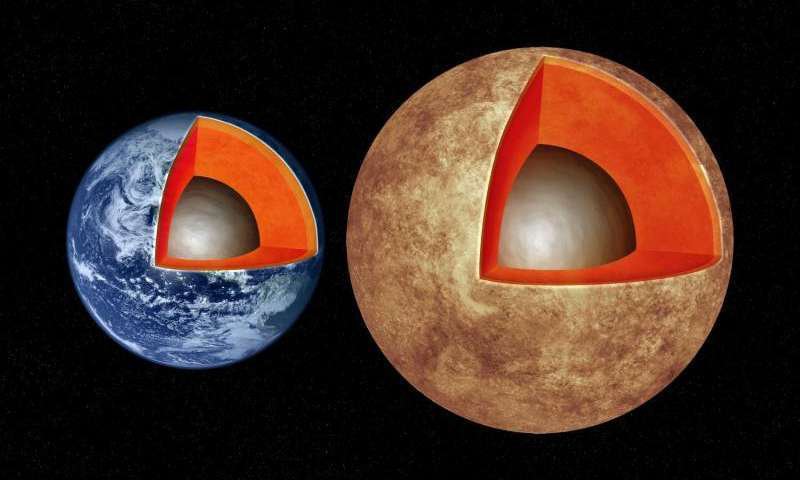
Jan. 24, 2020
Research Highlight
Measuring Temperature and Pressue
Determining the BAM triple point

Determining whether a planet is truly habitable may require an understanding of its inner dynamics.Image credit: Harvard-Smithsonian Center for Astrophysics.
Researchers supported in part by the NASA Astrobiology program have determined the triple point of akimotoite-majorite-bridgmanite (Ak-Mj-Bm or BAM). The results were obtained using a large-volume press (LVP) and laser-heated diamond anvil cell (LHDAC). A ‘triple point’ refers the exact temperature and pressure at which a substance can exist in its solid, liquid, and vapor phase at the same time in equilibrium. Determining the triple point of the mineral Akimotoite provides a reference point for future studies that will allow physicist to compare the conditions measured by the two methods, LVP and LHDAC. For astrobiology, the ability to determine accurate pressure and temperature in laboratory experiments is important for understanding the deep interior of planetary bodies. Details about planetary interiors can be used to better understand the conditions that lead to habitability.
The study, “The Bridgmanite–Akimotoite–Majorite Triple Point Determined in Large Volume Press and Laser-Heated Diamond Anvil Cell,” was published in the journal Minerals. The work was supported by the Nexus for Exoplanet System Science (NExSS). NExSS is a NASA research coordination network supported in part by the NASA Astrobiology Program. This program element is shared between NASA’s Planetary Science Division (PSD) and the Astrophysics Division. This research is a critical part of NASA’s work to understand the Universe, advance human exploration, and inspire the next generation. As NASA’s Artemis program moves forward with human exploration of the Moon, the search for life on other worlds remains a top priority for the agency.
Related
The Interiors of Exoplanets May Well Hold the Key to Their Habitability (Many Worlds)